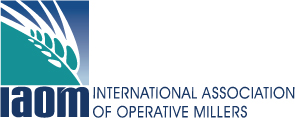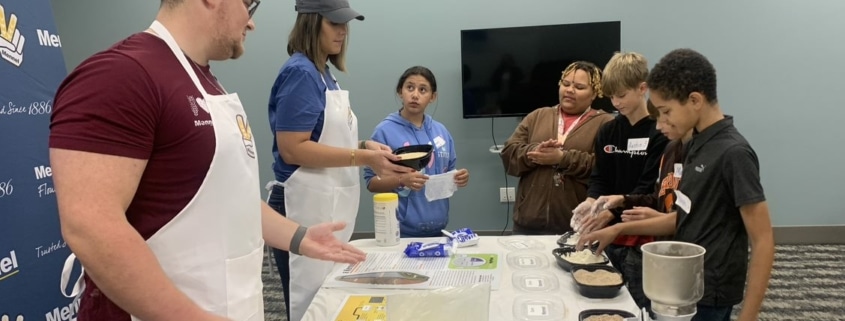
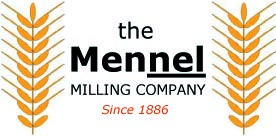
Introduction
The team at Mennel Milling recently celebrated the company’s 135th anniversary and under the leadership of the 5th generation family ownership of Ford Mennel, have expanded their operations into new product lines such as popcorn and bake mixes. That kind of growth and longevity go hand in hand with investing in their community and finding creative ways to operate with a workforce of over 600 associates across dozens of site locations. But this has not come without its challenges and maintaining a workforce of this size is not easy, even in the best of circumstances.
10 years ago, when their aspirations started becoming a reality, their team of associates was only a third of the size it is today. Composed primarily of local families who referred potential employees to the company, with low turnover and a tight knit network of pools to draw from, Mennel knew the tides would shift as their workforce grew. They had known for years that many of their most tenured workers would retire, and the aging demographics of their workforce could put them in a bind, and like many companies, they were reacting to their workforce needs instead of formulating a long-term strategy to overcome these challenges. These challenges, exacerbated by the global pandemic, highlighted just how much of a workforce shortfall they really had.
The approach that Mennel utilizes highlights the importance of maintaining a long-term strategy alongside short-term hiring goals. Their efforts showcase the importance of continued investment in workforce pipelines and represents an understanding that business-as-usual approaches to recruiting the employees they need will come up short.
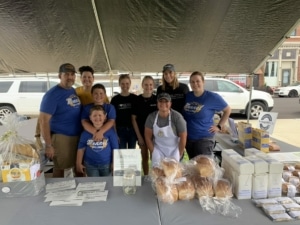 Finding Champions in your Community
Finding Champions in your Community
Successful community outreach requires a strategy that is resilient enough to withstand changes in funding priorities, staffing, and shifting trends in the educational and workforce development systems. Companies which interact with their local leaders and workforce apparatus can expect to experience frustrations including difficulty maintaining continuity, shifting priorities among stakeholders, or a lack of vision among community partners.
To arrive at a sustainable outreach method, it’s important that your program can function regardless of how your local educational and governmental authorities align their funding priorities. To achieve this, you must maintain a long-term view, and keep a seat at the table, so you can be a part of those decisions as they are made. In a world where we expect results, it’s easy to forget that investments take time to pay dividends, and systematic change doesn’t conform to quarterly reports or key performance metrics.
Mennel has centered their efforts around the Fostoria Learning Center, which acts as an intermediary between government, business and K-12 schools to shape how their region approaches workforce development and career preparation. By maintaining relationships with the FLC Executive Director, and attending community meetings, Mennel have positioned themselves as a crucial part of the action that exists at the confluence between government, workforce providers, and their local philanthropic community.
None of this comes easily or without a cost. Finding a voice in community groups only comes with a recognition, over time, that you’re in it for the long haul, embody a lasting concern for the welfare of your region, and act with the best interests of those around you. In short, creating lasting change doesn’t come from showing up to a meeting – it requires a deep investment into the lives of the people who surround your business.
Casting a Wide Net
It’s a given that your workforce will not look the same in the future. Demographic shifts and the changing landscape of the American experience aren’t political problems that have political solutions – these are business problems that represent business opportunities. Some companies and industries will wait for political solutions that never materialize, while others will adapt to this new reality with the same kind of gusto that the team at Mennel embodies.
Finding the untapped workforce means operating in the space between philanthropy and government; between how things used to be and how they will be in the future. Companies have known for years what will happen when their current workforce retires. Now that the time has come, leaders have a choice to be reactive or proactive.
The untapped workforce looks like this:
- 1 in 3 adults in the United States has some kind of criminal record. Lower estimates put this at 70 million people.
- 24 million children live in 10 million single-parent households.
- Upwards of 40 million adult workers do not have a high school equivalent education or GED
It’s easy to point out that there are societal factors that have manifested these circumstances. Many business owners will continue to compete for the workers focused solely on candidates that don’t have these characteristics. Forward looking leaders will invest in these populations and cultivate their latent potential.
The team at Mennel invest their time and resources in these populations in their region in different ways. They removed the ‘felony question’ from their job application. Their local drug court, known as the PIVOT program, actively engages with their workforce and is a part of their substance abuse policy. And they have taken the time to cultivate a ‘Make It’ day, which depicts the milling process to under-served students.
The region where Mennel is based has had its fair share of divestment in recent decades. This means that the median income of families in Fostoria is barely half of that of the country as a whole. This has led the Mennel team towards anti-poverty work that runs the gambit of causes including the need for transportation, interacting with family court and drug court, financial literacy programming and supporting their philanthropic community in their efforts to promote work readiness.
When asked about the last decade of investing in the human capital in their region, the team at Mennel can say a few things unequivocally. They wish they had started making these investments sooner. They wish that their practices had been more inclusive and less reactive. Their experiences working with economic development groups, philanthropic agencies, and workforce development entities can be quantified by photo opportunities, checks written, and hours spent in meetings, but even though these investments won’t show up on balance sheets for years to come, they already know what would happen if these chose the alternative.
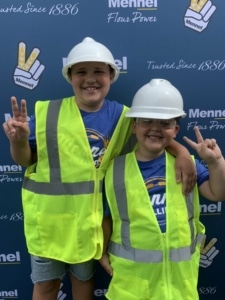 Perseverance Pays Off
Perseverance Pays Off
Companies that interact with the non-profit world, or economic development work and local government, often share similar frustrations. It’s difficult to establish continuity in a campaign, folks in their community have a meandering strategy towards change, and their educational institutions are caught up in the flavor of the week. Who has time to get involved in their community, anyway? You’ve got a business to run.
The reason company leaders come to these conclusions is both unsurprising and upsetting. The business world is used to solutions served up in myriad forms – software, technology, infrastructure – you pay the price and you get the results.
Companies want to hit the ‘easy’ button. Allocating dollars to a line item in a budget is comparatively easy when the effect on your operations is immediate, as it often is in the business world.
None of this holds true in the world of community outreach. If a company could pay the price to solve their workforce problems, they would have already done it – look at the resource rich companies in our country and think of the advantages they have in creating a place that talented people want to work. Considerable resources are spent working with staffing agents and other recruiting outfits – ask yourself how well that has worked for your organization.
None of this is to say that the frustrations aren’t real. They are. The team at Mennel have learned this the hard way. You get involved in a community project – a training program, for example – and think you’re going to walk away with some recruits. It doesn’t work out and you lose interest. You go to a job fair or community resource fair with the hopes of meeting the people who will apply to the openings at your company. You spend a significant amount of money and time and hire a few people, but they don’t stick around. You attend community meetings about workforce strategies, but it’s painstaking to get the stakeholders to coalesce around any kind of collective action. You stop going to the meetings.
Companies that approach these situations with their own vested interests in mind are a dime a dozen – communities have come to expect that. Marketing a depiction of your company with a positive contribution to the lives of those in your local community? Check. Diverse people in diverse roles? Check. Company employees coaching young people in sports or doing a public service project together? Check.
People see this. But they also see right through this.
In the world of community outreach and organizing, the last one standing wins. The people who are at work in these schools, who dedicate their lives to public service, who are invested in their communities through these institutions – they’re watching. Sure, they’ll gladly accept your donations, pose for pictures with you, let you sponsor their events.
This type of marketing is exceptional at getting people’s attention. But you can’t market your way to the workforce you want. Successful community outreach is about occupying a part of people’s mind and earning their good will over the long haul, and a catchy ad or job posting can’t do that.
Key Elements of the Strategy
- Find the champions in your community who are doing the work of developing the workforce. This can include intermediaries with economic development roles, but it can also include people at institutions such as the library, church or other service organizations.
- Determine who is going to own those relationships at your company. It’s not uncommon that office staffers or HR agents will have to spend considerable time, over months and years, to develop a pipeline of candidates.
- Be there for the long haul. Community groups, local governance, and pillars of your community didn’t become those things over night. You’re going to have to invest in those relationships to compete for the workforce you want.
- Keep an open mind towards underserved populations. Take stock of the depth of the investment it takes to cultivate some of your best workers and understand the challenges they face.
- Don’t confuse good public relations with good community outreach. Public relations work well on short cycles but investing in your local community over time pays dividends.
- Be patient with the stakeholders in your community – don’t be surprised if they are skeptical, slow to commit, or start off disinterested in your goals.
- Find meaningful ways to contribute to what goes on in your community and with your community builders. Offering financial support can go a long way but getting involved in the mission of your community organizations requires more than financial support.
